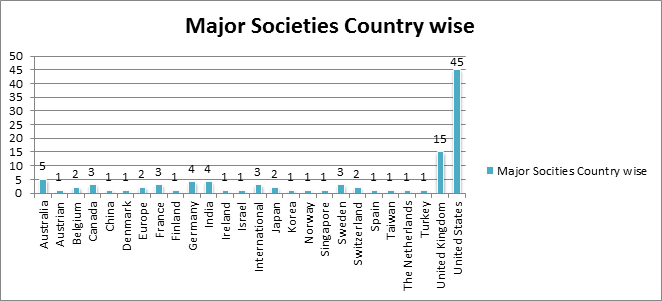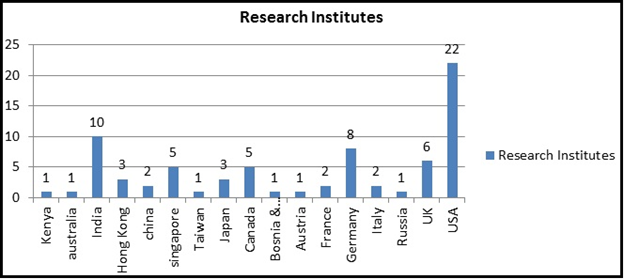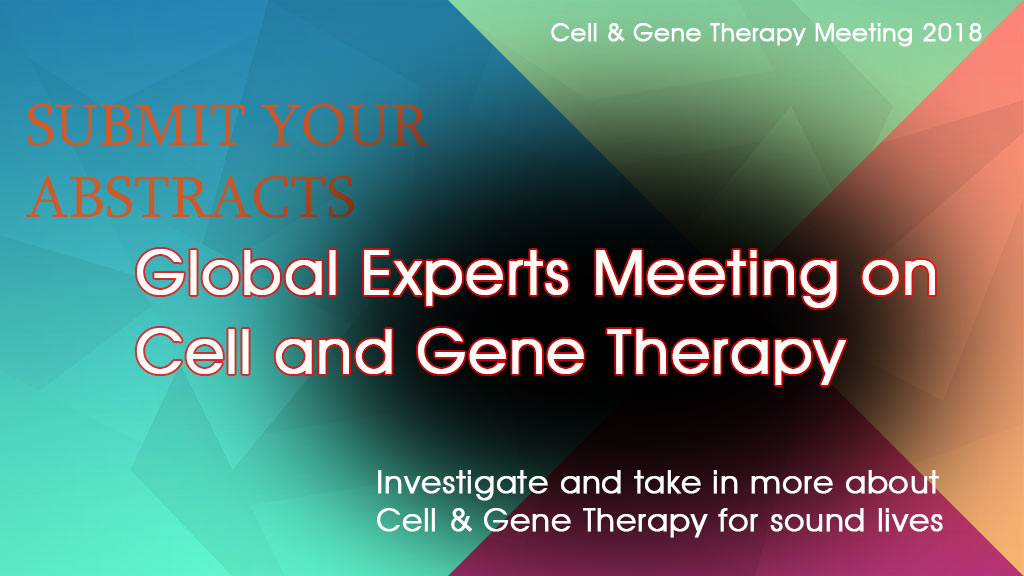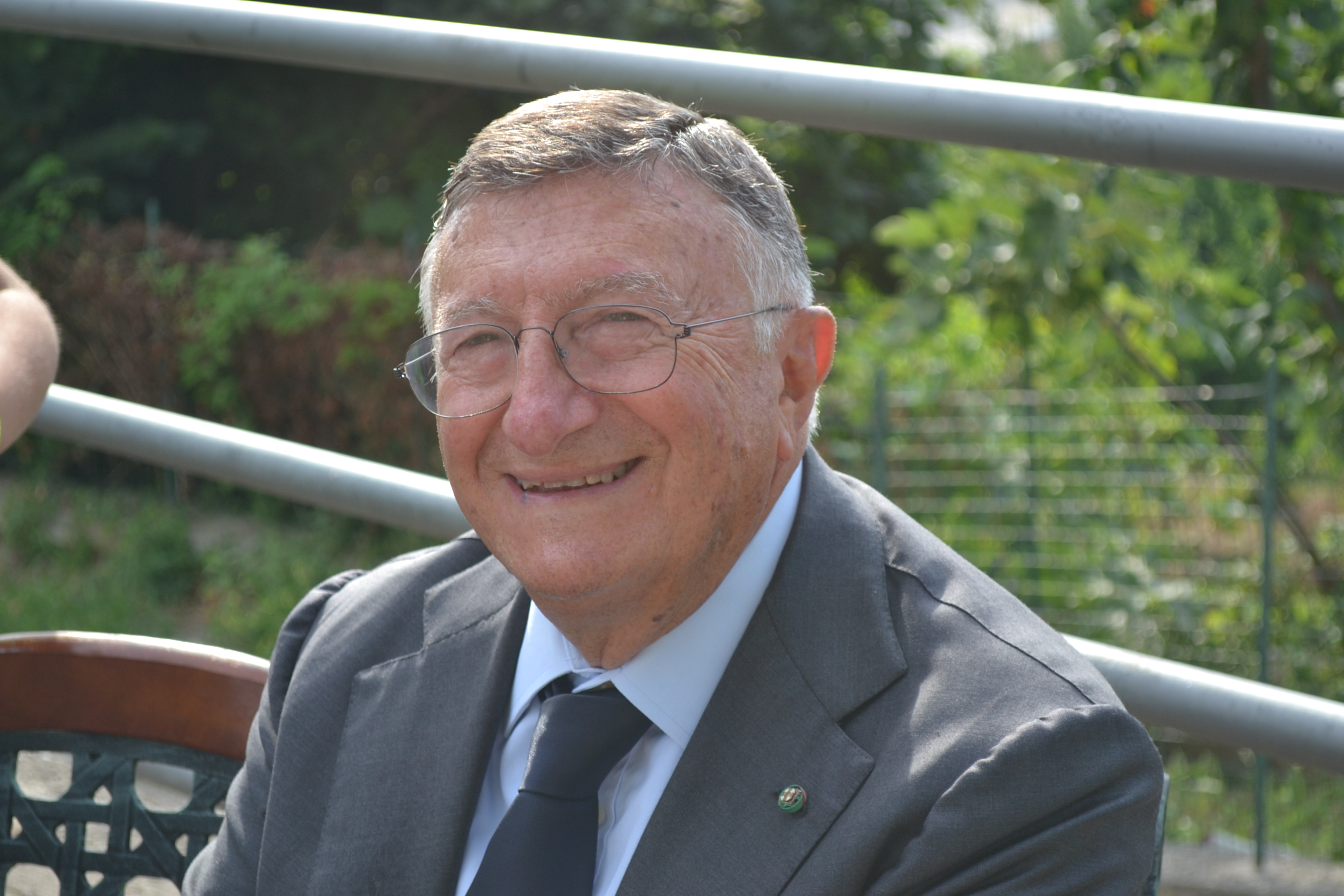
Cell Therapy Meeting 2018

Theme: An insight into Cell & Gene Therapy for sound lives..
Pleasure to welcome you all to our upcoming Global Experts Meeting on Cell and Gene Therapy during April 25-26, 2018 at Dubai, UAE. Cell & Gene Therapy Meeting 2018 will be organized around the theme “An insight into Cell & Gene Therapy for sound lives”. This Global Meet will bring together world-class personalities working on cell and gene therapy, stem cells, tissue engineering and regenerative medicine to discuss about the Frontiers in Cell and Gene Therapy: From Bench to Bedside.
Track 1: Cell and Gene Therapy
Gene and Cell Therapies have made vital therapeutic advances in less than three decades. Inside this brief span traverse, both gene and cell treatments have investigated numerous ideas, created different innovations, surveyed the advances in various animal models, and tried the novel treatments in numerous human clinical trials of dreaded infections. Some energizing changes have been seen in a few infections by the medications. Although a few trials did not give the hope for advancements, every trial has propelled our comprehension of the complex interactions between various tissues and highlighted challenges for further research.
Related Conferences: Cell & Gene Therapy Conferences | Cell & Gene Therapy Meetings | Cell & Gene Therapy Events | Genetics & Molecular Biology Conferences
Track 2: Inherited Metabolic Disorders
Inherited metabolic disorders are hereditary conditions that result in digestion issues. Many people with inherited metabolic disorder have an inadequate quality that outcomes in enzyme deficiency. There are many distinctive hereditary metabolic issue, and their side effects, medications, and prognoses fluctuate generally. Inborn error metabolism are uncommon genetic (acquired) disorder in which the body can't legitimately transform food into energy. The disorders are typically brought on by defects in particular proteins (compounds) that help separate (utilize) parts of food. Limited medicines are accessible for inherited metabolic disorders. The essential genetic defect creating the condition can't be remedied with current innovation. Rather, medicines attempt to work around the issue with metabolism.
Related Conferences: Cell & Gene Therapy Conferences | Cell & Gene Therapy Meetings | Cell & Gene Therapy Events | Genetics & Molecular Biology Conferences
Track 3: Stem Cell Transplantation
Hematopoietic stem cell transplantation (HSCT) is the transplantation of multipotent hematopoietic stem cell, generally derived from bone marrow, peripheral blood, or umbilical cord blood. A stem cell transplant is a treatment for a few sorts of disease. For some individuals, transplants can mean a cure, however for a few people, issues can prompt extreme entanglements or even death. Transplants can likewise be hard emotionally. They regularly require being in the healing facility, being confined, and there's a high danger of symptoms. Many of the effects are short-term, however a few issues can continue for quite a long time. This can mean changes in the way you carry on with your life. For a few people it's only for some time, however for others, the changes may be lifelong.
Related Conferences: Cell & Gene Therapy Conferences | Cell & Gene Therapy Meetings | Cell & Gene Therapy Events | Genetics & Molecular Biology Conferences
Track 4: Gene Mapping
Genome mapping is to put a gathering of atomic markers onto their particular positions on genome. Atomic markers come in all structures. Genes can be seen as one extraordinary kind of hereditary markers in development of genome maps, and the guide is mapped the same way as any other markers. The nature of hereditary maps is generally reliant upon the two elements, the quantity of hereditary markers on the guide and the span of the mapping populace. The two components are interlinked, and as bigger mapping populace could expand the "determination" of the maps and keep the guide being "soaked".
Related Conferences: Cell & Gene Therapy Conferences | Cell & Gene Therapy Meetings | Cell & Gene Therapy Events | Genetics & Molecular Biology Conferences
Track 5: Tissue Science
Tissue Science and Engineering utilizes physical, chemical, and biological factors to supplant or potentially enhance natural elements of the phone. Tissue engineering includes the utilization of a platform for the development of new viable tissue for a medicinal reason. While it was once classified as a sub-field of biomaterials, having developed in scope and significance it can be considered as a field in its own. Frequently, the tissues included require certain mechanical and structural properties for appropriate working. The term has likewise been connected to efforts to perform particular biochemical functions utilizing cells inside an artificially-created support system (e.g. an artificial pancreas, or a bio artificial liver). Regenerative medicine is the recent advancement in tissue science and engineering.
Related Conferences: Cell & Gene Therapy Conferences | Cell & Gene Therapy Meetings | Cell & Gene Therapy Events | Genetics & Molecular Biology Conferences
Track 6: Regenerative Medicine
Regenerative medication is the branch of medicine that creates techniques to regrow, repair or replace damaged or unhealthy cells, organs or tissues. Regenerative medicine incorporates the era and utilization of restorative stem cells, tissue engineering and the generation and use of therapeutic stem cells. The promising field of Regenerative Medicine is attempting to restore structure and function of harmed tissues and organs. It is likewise attempting to make solutions for organs that turn out to be permanently damaged. The objective of this medicine is to figure out how to cure already untreatable wounds and sicknesses. In stem cell therapy, or regenerative drug, specialists think about how stem cells might be utilized to supplant, repair, reprogram or renew your sick cells. stem cells can develop and form into different cell types in our body.
Related Conferences: Cell & Gene Therapy Conferences | Cell & Gene Therapy Meetings | Cell & Gene Therapy Events | Genetics & Molecular Biology Conferences
Track 7: Genomics and Gene Editing Technologies
Genomics is an interdisciplinary field of science concentrating on genomes. Genome altering, or genome editing with engineered nucleases (GEEN) is a kind of hereditary building in which DNA is embedded, erased or supplanted in the genome of a living creature utilizing built nucleases, or "sub-atomic scissors." TALENs are Transcription Activator-Like Effector Nucleases. They are counterfeit confinement catalysts ready to cut DNA just where they experience a particular succession of nucleotides. The story starts with the disclosure of a group of proteins discharged by plant pathogens in the family Xanthomonas. APStock Germ line altering can be utilized to repair a faulty gene in a sperm cell. Be that as it may, the innovation can likewise be utilized to repair an inadequate gene in a sperm or egg cell, or in a developing life that is just a couple days old. In these cases, called germ line altering, the new gene would be passed to future generations. Clustered routinely interspaced short palindromic rehashes (CRISPR, articulated crisper) are sections of prokaryotic DNA containing short, redundant base successions. Every redundancy is trailed by short portions of spacer DNA from past exposures to outside DNA (e.g., an infection or plasmid). Zinc finger nucleases (ZFNs) are a class of built DNA-restricting proteins that encourage focused on altering of the genome by making twofold strand softens up DNA at client indicated areas.
Related Conferences: Cell & Gene Therapy Conferences | Cell & Gene Therapy Meetings | Cell & Gene Therapy Events | Genetics & Molecular Biology Conferences
Track 8: Regulation of Gene Expression
Genes encode proteins and proteins manage cell functions. In addition, each step in the stream of data from DNA to RNA to protein gives the cell a potential control point for self regulating its functions by altering the amount and kind of proteins it produces. Direction of Gene expression incorporates an extensive variety of components that are utilized by cells to increment or lessen the creation of particular gene products (protein or RNA), and is casually named gene regulation. Advanced projects of gene expression are generally seen in science, Virtually any progression of gene expression can be regulated, from transcriptional start, RNA preparing, and post-translational change of a protein. Frequently, one gene regulator controls another in a gene control system. Steps involved in gene expression might be tweaked, from the transcription step to post-translational modification of a protein.
Related Conferences: Cell & Gene Therapy Conferences | Cell & Gene Therapy Meetings | Cell & Gene Therapy Events | Genetics & Molecular Biology Conferences
Track 9: Formulation and Drug Delivery
The Head of Formulation and Drug Delivery will assume a key part in guaranteeing the advancement of a stable product that gives sufficient shelf life to guarantee a safe and strong product. Drug delivery systems (DDS), for example, lipid-or polymer-based nano particles can be intended to enhance the pharmacological and helpful properties of medications controlled parenterally. A hefty portion of the early issues that frustrated the clinical utilizations of particulate DDS have been overcome, with a few DDS plans of anticancer and anti-fungal medications now affirmed for clinical use. Moreover, there is significant enthusiasm for using the upsides of DDS for in-vivo delivery of new medications derived from proteomics or genomics research for their utilization in ligand-focused on therapeutics
Related Conferences: Cell & Gene Therapy Conferences | Cell & Gene Therapy Meetings | Cell & Gene Therapy Events | Genetics & Molecular Biology Conferences
Track 10: Transplantation and Immunogenetics
The Division of Transplantation and Immunogenetics (T&I) performs human leukocyte antigen (HLA) composing, histocompatibility contemplates for organ and stem cell transplants (SCT), and diverse tests identifying with transplantation, personalised medication and immunogenetics. The Division likewise leads research and gives educational and training programs to healthcare professionals. Over the years, the quantity of potential and actual transplant candidates serves by T&I have expanded exponentially. The division keeps on giving quality testing to decide similarity amongst patients and givers. Likewise, to guarantee convenient checking, better coordination and instructive arrangement to patients in organ transplant and SCT patients. Transplant Laboratory Coordination Center was set up in 2012.
Related Conferences: Cell & Gene Therapy Conferences | Cell & Gene Therapy Meetings | Cell & Gene Therapy Events | Genetics & Molecular Biology Conferences
Track 11: Cell and Gene Therapy Products
Human gene therapy alludes to items that bring hereditary material into a man's DNA to supplant broken or missing hereditary material, hence treating a malady or irregular medicinal condition. Although some cell treatment items have been endorsed, CBER has not yet affirmed any human gene therapy product available to be purchased. There are three sources of donar cells for cell treatment products. 1) the patient's own cells 2) the cells from another person 3) the cells derived from another creatures, for example, pigs, primates, bovines. Cell therapy products can be altered with the assistance of DNA or another nucleic acid so that the pattern of gene expression is changed.
Related Conferences: Cell & Gene Therapy Conferences | Cell & Gene Therapy Meetings | Cell & Gene Therapy Events | Genetics & Molecular Biology Conferences
Track 12: Ethical Issues
The utilization of human embryos for research on embryonic stem (ES) cells is presently beat on the moral and political plan in numerous nations. Despite the potential advantage of utilizing human Embryonic Stem cells in the treatment of diseases, their utilization stays dubious due to their beginning from early fetuses.
Related Conferences: Cell & Gene Therapy Conferences | Cell & Gene Therapy Meetings | Cell & Gene Therapy Events | Genetics & Molecular Biology Conferences
Track 13: Future Scope
The utilization of human embryos for research on embryonic stem (ES) cells is presently beat on the moral and political plan in numerous nations. Despite the potential advantage of utilizing Human Embryonic Stem cells in the treatment of diseases, their utilization stays dubious due to their beginning from early fetuses.
Related Conferences: Cell & Gene Therapy Conferences | Cell & Gene Therapy Meetings | Cell & Gene Therapy Events | Genetics & Molecular Biology Conferences
Meetings International invites you to attend the Global Experts Meeting On Cell and Gene Therapy amid April 25-26, 2018 at Dubai, UAE. We warmly welcome every one of the members who are keen on sharing their insight and research in the field of Cell and Gene Therapy.
Cell and Gene Therapy Conference is to enhance the learning, mindfulness, and training on cell and gene treatment prompting the disclosure of cell and gene therapies which help to reduce the human illness as it is the most noteworthy developing innovation according to Medical, Biotechnology, Pharmaceuticals and Academia. Global Experts Meeting On Cell and Gene Therapy is a phenomenal open door for the representatives from Universities and Institutes to interface with the world class Scientists.
Gene Therapy Conferences is an occasion for uniting Scientists, Physicians, International blend of leading Universities, Cell Gene Therapy Institutions to change the act of medication by consolidating the utilization of cell and gene therapies to control and cure human illness.
This two-day Cell and Gene Therapy Event will address key issues concerning cell and gene treatment in the more extensive content of cellular and genetic disorder. Sorted out around day by day subjects, the Conference concentrates on moving from present learning to future solutions
Why to attend???
This unique global meeting gives a stage to scientists and chiefs in Cell and Gene Therapy to show their most recent discoveries and find out about all the critical improvements in Cell and Gene Therapy. Numerous researchers and incredibly famous specialists will take part in the gathering. Over the span of the Two days gathering, you will have the chance to meet both network and hear pioneers from the international academic and corporate Cell & Gene Therapy communities. This meeting look to bring all such researcher, Noble Laureate, scientist, explore researcher, understudies and individuals together who are included in this field and give them chance to talk about their advancement, trade thoughts and connection with each other.
The past gatherings on Cell and Gene Therapy which were held at San Antonio, USA. also, London, UK have clarified Research and Advancements in Cell and Gene Therapy, picked up such an extensive amount enthusiasm for famous researchers everywhere throughout the world in the field of Cell and Gene Therapy. Presently it is the ideal opportunity for the Global Experts Meeting On Cell and Gene Therapy to put forth the thoughts on An insight into Cell & Gene Therapy for sound lives which will be held from April 25-26, 2018 at Dubai, UAE.
Target Audience:
Cell and Stem Therapy Researchers
Cell and Stem Therapy Faculty
Medical Colleges
Cell and Stem Therapy Associations and Societies
Business Entrepreneurs
Training Institutes
Cell and Stem Therapy Companies
Cell and Stem Therapy Investors
Exhibitors and Sponsors
Conference Highlights
· Advancements in Cell and Gene Therapy
· Inherited Metabolic disorders
· Genomics and Gene Editing Technologies
· Regulation of gene expression
· Formulation and Drug delivery
· Transplantation and Immunogenetics
· Cell and gene Therapy Products
Importance and scope
Cell and Gene Therapy is a mounting and continually developing field of study, one which has increased much ground in past years through the improvement of advanced research and data management tools. Expert analysts investigate the present issues and procedures of this growing field, particularly tending to regions of gene discovery and the functional analysis of gene with an objective on the primary tools and sub-discipline of hereditary mapping, mRNA, Protein and metabolite profiling. Cell and Gene Therapy utilize energizing new strategies to explore stem cell transplantation and gene functional analysis by means of change, transformation, protein capacity, and gene expression.
As of now, the idea of cell and gene therapy is being approved by various pharmaceutical organizations utilizing clinical information, and there is a developing enthusiasm among venture capitalists to investigate the commercial potential of gene therapy. However, the growth of the cell and gene therapy market is largely dependent on the regulatory environment, and on approvals from industry bodies. At present, most cell and gene therapy products are still in the clinical trials stage II and stage III, of which majority of the therapies concentrates on the treatment of tumor and cardiovascular diseases. The developing prevalence of DNA vaccines has decidedly affected the development of this market, and there is a high plausibility of cell and gene treatment being practiced in centers in the following couple of years, as empowering results are rising up out of the stage II/III trials.
This unique global meeting gives a stage to scientists and chiefs in Cell and Gene Therapy to show their most recent discoveries and find out about all the critical improvements in Cell and Gene Therapy. Numerous researchers and incredibly famous specialists will take part in the gathering. Over the span of the Two days gathering, you will have the chance to meet both network and hear pioneers from the international academic and corporate Cell & Gene Therapy communities. This meeting look to bring all such researcher, Noble Laureate, scientist, explore researcher, understudies and individuals together who are included in this field and give them chance to talk about their advancement, trade thoughts and connection with each other.
Why Dubai?
DUBAI, is a city in the United Arab Emirates, located within the emirate. The emirate of Dubai is located on the southeast coast of the Persian Gulf and has the largest population in the UAE (2,106,177) and the second-largest land territory by area (4,114 km2) after Abu Dhabi. There are 52 institutions in Dubai that offer higher education programs, and they are grouped into three categories; federal institutions, institutions in the Free Zones and institutions outside the Free Zones. The most popular field of study among students in Dubai is Business (42% of students), followed by Society, Law and Religion (19%). Significant numbers are also studying Engineering (9%), Information Technology (6%) and Media and Design (7%). There are very few students studying Health and Medicine (2%), Education (1%), Natural and Physical Sciences (1%) and Tourism and Hospitality (1%). Around 7% of all students are in Foundation programs that prepare school leavers with necessary skills for university study.
Dubai conferences indeed play a vital role in promoting scientific information and ideas all over the world. It can be considered as a suitable medium for the relocation of valuable knowledge about research and novel advancements worldwide. The conferences taking part here would promote a variety of scientific ideas among contenders belonging to diverse areas of science and technology.
Apart from this, Dubai has been known for luxury shopping, ultramodern architecture and a lively nightlife scene. Burj Khalifa, an 830m-tall tower, dominates the skyscraper-filled skyline. At its foot lies Dubai Fountain, with jets and lights choreographed to music. On artificial islands just offshore is Atlantis, The Palm, a resort with water and marine-animal parks.
Top Major Societies & Associations of Cell and Gene Therapy
American Society of Gene and Cell Therapy (ASGCT)
Australasian Gene and Cell Therapy Society (AGCTS)
Austrian Network for Gene Therapy
British Society of Gene Therapy (BSGT)
European Society of Gene and Cell Therapy (ESGCT)
German Gene Therapy Society (DGGT)
International Society for Cancer Gene Therapy (ISCGT)
Irish Society for Gene & Cell Therapy (ISGCT)
Israeli Society of Gene & Cell Therapy (ISGCT)
Japan Society of Gene Therapy (JSGT)
Korean Society of Gene and Cell Therapy (KSGCT)
Netherlands Society of Gene and Cell Therapy (NVGCT)
Spanish Society of Gene and Cell Therapy (SETGyC)
Swedish Society for Gene and Cell Therapy (SSGCT)
Turkish Society of Gene & Cell Therapy (TSGCT)
Alliance For Cancer Gene Therapy (ACGT Foundation)
American Society of Law, Medicine and Ethics
Association of Genetic Technologists
Association of Professors of Human or Medical Genetics
Biotechnology Industry Organization (BIO)
Clinical Molecular Genetics Society

Top Research Institutes of Cell and Gene Therapy Globally

Figure: List of Research Institutes
Market Value on Cell and Gene Therapy:
The global stem cell therapy market is expected to reach $330 million by 2020, at a CAGR of 39.5% from 2015 to 2020
The global stem cell market in 2015is expected to be dominated by North America, followed by Asia-Pacific and Europe. However, Asia-Pacific market is expected to surpass North America by 2020, owing to the high number of ongoing research activities.
Autologous Stem Cell and Non-Stem Cell Based Therapies market is currently estimated as $650 million, including products of all application areas. This market is anticipated to reach $2.2 billion by 2017, growing at a CAGR of 21%. ACT has already been successful in the treatment of prostate cancer, skin burns, cosmetic surgeries, skin substitutes, wound healing, pressure ulcers, etc.
Products manufactured by the industry related cell therapy and its market Value:
Global markets for stem cells by BCC Research (2012), cited by Ministry of Food and Drug Safety, predicted the global market size of stem cell therapy product would be 6.6 billion dollars in 2017 and grow 11.7% on average every year. Currently, US's stem cell therapy product occupying the biggest market share amounts to 1.3 billion dollars and Europe's is 872 million dollars. US's stem cell therapy product market is predicted to have an average annual growth rate of 11.5% (2.3 billion dollars in 2017), and Europe's is 10.9% (1.5 billion dollars in 2017). Until August 1, 2013, three stem cell therapies has acquired a sale permit for domestic use in Korea: Hearticellgram-AMI by FCB-Phamicell (the world's first stem cell therapy product), Cartistem by Medipost (the world's first allogenous stem cell therapy product) and Cupistem by Anterogen. Besides, 24 medicines are undergoing clinical trial till January 1, 2013.
- Cell and Gene Therapy
- Inherited Metabolic Disorders
- Stem Cell Transplantation
- Gene Mapping
- Tissue Science
- Regenerative Medicine
- Genomics and Gene Editing Technologies
- Regulation of Gene Expression
- Formulation and Drug Delivery
- Transplantation and Immunogenetics
- Cancer Epigenetics
- Clinical Trials on Cell & Gene Therapy
- Cell and Gene Therapy Products
- Ethical Issues
- Future scope
- Journal of Tissue Science & Engineering
- Journal of Stem Cell Research & Therapy
- Journal of Genetic Syndromes & Gene Therapy



























































































































